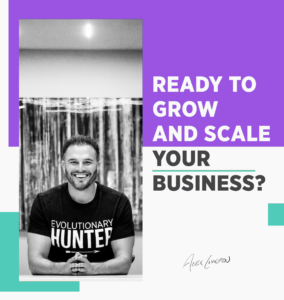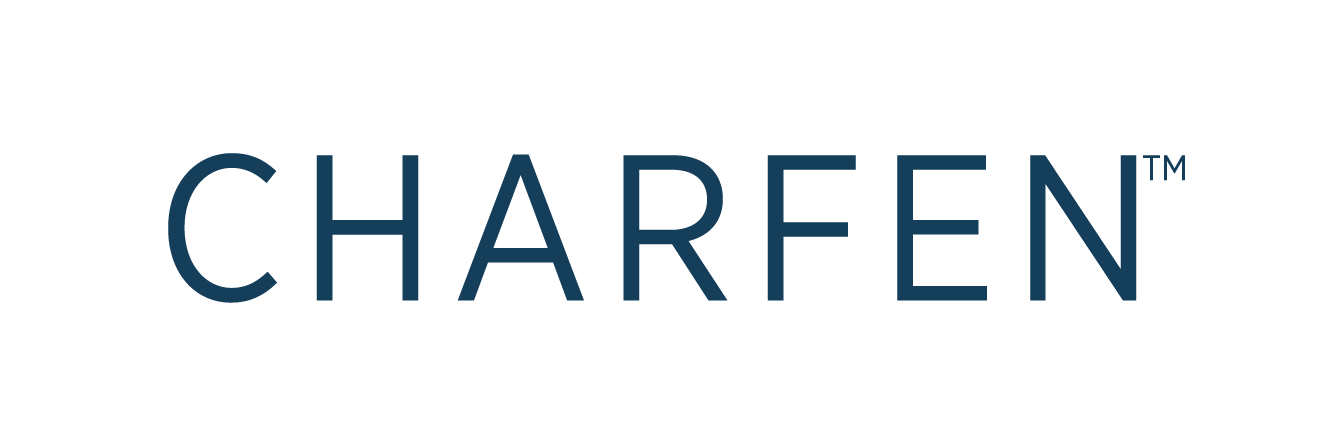Momentum Podcast: 816
Work less to Grow Faster Part 2
by Alex Charfen
Episode Description
I had so much fun recording the first episode of “Work Less To Grow Faster” that I had to record a second one.
Most of us entrepreneurs have heard that we need to document our business's processes to have a real company. Most of us have also felt completely overwhelmed by this idea.
I read the E-Myth when I was in my twenties, and I was so overwhelmed by it that I avoided the subject altogether. In this episode, I will share with you the process I have for process documentation now that gets things done in a fraction of the time costs me minimal effort, and make sure that my company is safe and that we know what we are doing.
Full Audio Transcript
This is the Momentum podcast. I feel like this concept of working less to grow faster is so important, and I had so much fun recording the first episode that this is the second. You know, in the first episode I talked about one of the ways to work less is to stop solving all the problems. So if you haven't listened to it, you might want to check it out. And now in this second episode, I'm going to talk about process development. So many of us have read The E-Myth, but just the idea of documenting every single process in an entire business down to this singular step is so overwhelming. In this episode, I want to help you do it much, much easier. I'm Alex Charfen and this is the Momentum podcast made for Empire Builders game changers, trailblazers, shot takers, record breakers, world makers and creators of all kinds. Those among us who can't turn it off and don't know why anyone would want to. We challenge complacency, destroy apathy, and we are obsessed with creating momentum so we can roll over bureaucracy and make our greatest contribution, should we pay attention to their rules, but only so that we can bend them, break them, then rewrite them around our own will. We don't accept our destiny. We define it. We don't understand defeat because you only lose if you stop. And we don't know how. While the rest of the world strives for average and clings desperately to the status quo, we are the minority. The few who are willing to hallucinate there could be a better future. And instead of just daydreaming of what could be, we endure the vulnerability and exposure it takes to make it real. We are the evolutionary hunters, clearly the most important people in the world, because entrepreneurs are the only source of consistent, positive human evolution. And we always will be. Okay. So just really quick review from the first episode in case you haven't yet listened to it. You know, I have this belief that as entrepreneurs, the more we once we build the team, not for a beginning entrepreneur, not for somebody who's just starting out and not for somebody who's just starting a business there. You end up having to do the lion's share of the work. And in some cases you have to do everything and you are going to have to put in hours and there's going to be some hustle and there's going to be grind. But in my belief, if you continue those habits, once you build a team, you're going to become the biggest liability in the company. You're going to stay the biggest bottleneck in the company, and you're going to have a hard time creating the freedom that we want as entrepreneurs. And in the first episode, I talked about problem solving. And if we are involved in every problem and we do all the problem solving, it makes growth very difficult. And in this episode, I want to talk about process development. So one of the conversations I have often with entrepreneurs is somebody will you know, we'll be talking at an event or I'll meet somebody, I'll tell them what I do and they'll go, Oh, man, you know, that's how. And I'll tell them. We help entrepreneurs simplify their operations and plan, execute consistently and build a really solid infrastructure of a company. And they'll say, Oh, you know, I've read The E-Myth. I really had trouble documenting all the processes in my company. And then we'll get into a conversation about just how overwhelming it feels to read The E-Myth. I know when I first read it, I was completely overwhelmed. I had it given to me by an accountant when I was like 22 or 23. I was just trying to keep my business going. And I read this book that basically says, If you want to build a real business, you have to document every single thing you ever do down to the singular step. And I remember thinking like, I run a consultancy. Half the stuff we do, we're figuring out on the fly, How do I do this? It's so frustrating. It's so confusing. Like, I don't. And I just I ended up not doing any of it for a long time. And part of it was because I didn't really understand how to get it done. Part of it was because I was overwhelmed by the very concept, and part of it was because I was in that place as a young entrepreneur where I didn't know how to leverage my team, I didn't know how to delegate. So I got my time back. I didn't know how to even get the time so I could think about a project like that and. I often, you know, talk to and work with entrepreneurs who feel the same way as I did back then. And when they start thinking about process development, it's just overwhelming. So if you've never heard of the term process development or process documentation, what this means is in a business, taking a process that you have, like if you're trying to think of a good example, but let's say that you're in a brick and mortar and you're selling memberships. Well, you would document every step of the sale of the membership. Yeah, we set an appointment with the person. We follow up on the appointment. The person shows up for the appointment, we greet them. We use this sale script. We, you know, that type of a process documentation down to the singular step. And when you do this in a company, you know, this is this is a discipline that every company should do. Every company should always be engaging in. Because when you document processes, a ton of stuff happens. You get clear on the process. Often as you document it, the process becomes more efficient. In fact, you know, we've share in our membership and we've actually seen more than once we have testimonials about this that when you go to a full from a fully undocumented process to a documented process, you can have a time savings of up to 90%. And I know that sounds crazy, but we've absolutely seen it in our company and we've seen it over and over again in our clients companies. I think Brad Lee and Brad. Brad Gibb and Ryan Lee were in our program for a while, and they run a company called Cash Flow Tactics, which is an awesome company for people who work in companies like ours and have jobs and want to get advice on how they can create some cash flow and some freedom. And they had a process for onboarding a new client. And I think it went from something like 14 hours with Brad and Ryan involved to where when they documented it and created forms and created a process and a structure, it was like 45 minutes with a receptionist. I can't remember exactly. But if you search for Brad Gibb on my website at Charfen dot com forward slash podcast, you can listen to the podcast where he talks about what a life changer the process documentation was. Now, as entrepreneurs, when we start thinking about process documentation, we don't want to do it ourselves. And one of the things that, you know, working less so that we can grow faster is when we put put strategies in place so we don't have to do everything ourselves. So let me share with you the process. Development process or yeah, process development process or process development strategy, the step by step that I have in my company and that we train our clients to do it. It cuts process development to a fraction of the time for someone like you or me. But it also ensures that there's a way to get all of the processes documented in the company without us having to do it. So when there's a process in our company that we want to document, I think I can think of one of the last ones that we did was how we take these podcast episodes and we develop content out of them. So the podcast becomes other content within the company. And, you know, we had some really specific things that we wanted to do and there wasn't a process document. So what I do and I'll take you through the process, I either shoot a loom video. I Aloma if you've never used loom it's fantastic. It just allows you to record on your desktop. It allows you to be on video. You can shoot a quick link or a quick video gives you a link. You can send it to somebody, they can watch it, you know, when they watched it. So it's a great product. And either one of those videos where I have a one on one meeting with somebody and I explain what I want the process to do to them that I do and I explain it to them. And then I ask them to ask me questions and I let them interview me on the process. Like what? What are the details that I want? What are the things that are important to me? What are the things that that I want to make sure don't happen? Is there any things, you know, I want to make sure do happen? Like what are what is everything that that process needs? And then that's the first step. Should the video or have the meaning? And if I shoot the video, I make sure I get follow up questions. Second step is I have them document the process and we use flowcharts and there's a ton of flowchart software out there. We use Lucid Chart, there's other ones that you can use and we have the team member document on a step by step in a flow chart. The process that I described in the video where we had the meeting or we had a meeting and then they ask me questions. Then I go through the process and either do that with them in person. If it's extensive, I do it with them in person so that they can explain things to me. If it's more simple, I might just do it, you know, by myself. And they shoot a little video with feedback. So I always make sure I go through it. And even if it's 100%, I just make sure that they get the feedback that it's 100%. Most of the time I either have questions. I might see someplace where the process isn't clear or I might want something to be clarified or changed. And so I'll do that in person or on a loom video, and then I have them update the process again. And then we test it, we use it, we use the process in real life. And what happens is when you use the process in real life, 99 out of 100 times, you see more opportunity to update. So we test, we update the process again, we make sure it's documented, documented, and then we start using the process. And as needed, the person who's in charge of it will update it. And if they feel like there's a material change to the outcomes, they'll share it with me. But this way, you know, by the way, I don't want everybody sharing every process change with me unless it's something that's going to cost money or unless it's something that's going to materially change the outcome or change who's doing it. Even some cases, if it changes, who's doing it, I don't really feel like I need to be involved. I want you know, I want to be involved in the beginning. I want to be able to go through the process. I want to make sure that my intentions were documented. I want to make sure the outcomes are clear. But then I leave it up to that person to maintain the process and make the updates and create efficiencies because they're in the chair. I can't possibly pretend to see everything they're seen if they're the one who's creating this outcome, and so they update the process as necessary. We make sure that it's fully documented, and then if we ever get to a place where we feel like something's getting too heavy, too difficult, it's involving too many people, we might overhaul the entire process. And really, it kind of starts with what we're doing here. You know, I might not shoot a video or have a meeting over. An initial overhaul or I'll meet with the person to help them clarify what they want to overhaul, and then they document it. Then we go through it. Then we do the feedback. Then we test it. Then we update it. And then we update the process as necessary again. And this way I can have multiple people on a team updating processes for me, and I can get exponentially more done than I would myself. And I'm not doing something that I don't really love and I'm not really good at. Just to be honest, I'm not fantastic at process documentation. You know, there's a lot of things that I'm really gifted at and I'm good at and I understand those things and understanding those things allows me to stay out of the way of the things that I'm really not that great at. And this is one of those. And so and by doing this, I'm working less to grow faster. I'm literally working less to grow faster. And so I. When it comes to process documentation absolve any belief that you have to do it all yourself. In fact, the best way to do it is to not do it yourself. Because there's one more factor here that I didn't mention. When you allow a team member to create the process, even if it's based on a loom video from you or a meeting with you and your clarifications, you actually allow that team member to own the process and people will do what you ask them to. They will passionately do what you allow them to co-create. And if you create ownership by allowing somebody to create the process, they're going to own it at a completely different level. They're going to maintain it at a completely different level. They're going to feel like it's theirs and theirs to take care of theirs to make better, theirs to make efficient, and theirs to make effective. And the converse is correct is the same. If you create the process, they're going to feel like it's yours, yours to maintain, yours to make effective, yours to make efficient. Even if you tell them you want them to do those things, they're unlikely to change something that they didn't create and own. And so this is a incredible way to stop trying to do all the process, documentation yourself and build the foundation of your company by getting all the process documentation done and build massive efficiencies throughout the entire organization by going through documenting every process but not doing it yourself. So thanks for being here with me today. I appreciate you listening to the podcast. If you know an entrepreneur who needs to hear this, take a second right now, copy the link and send it to him. And if you'd like to jump on a call with a member of our team to find out how we can help you simplify your operations and create efficiencies throughout your organization and stop being the biggest bottleneck. Go to simple operations dot com. We've helped a ton of companies go from the high six figures to seven figures, and we're one of the few coach coaching organizations out there that has helped a ton of companies go from 7 to 8. So if that's where you're going and you want to be able to have a life at the same time, go to simple operations dot com. We'd love to talk to you.
Thank You For Listening!
I am truly grateful that you have chosen to spend your time listening to me and my podcast.
Please feel free to reach out if you have a question or feedback via our Contact Us page.
Please leave me a review on iTunes and share my podcast with your friends and family.
With gratitude,
Alex
- In this episode, I will share with you the process I have for process documentation now that gets things done in a fraction of the time costs me minimal effort, and make sure that my company is safe and that we know what we are doing.




